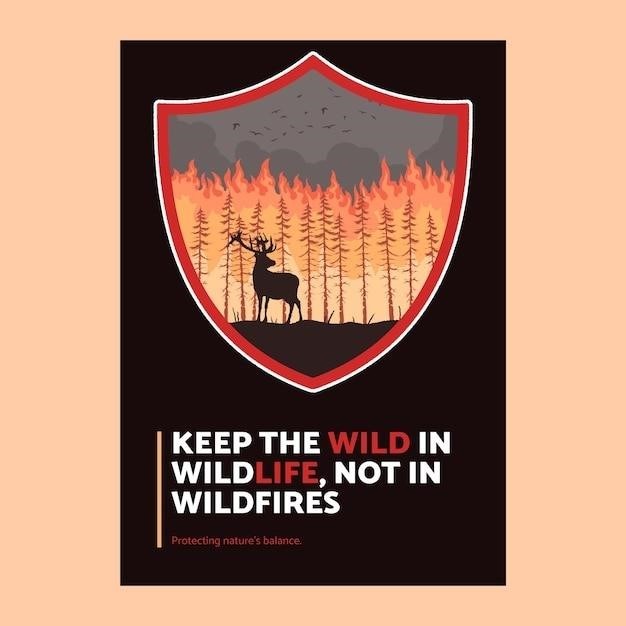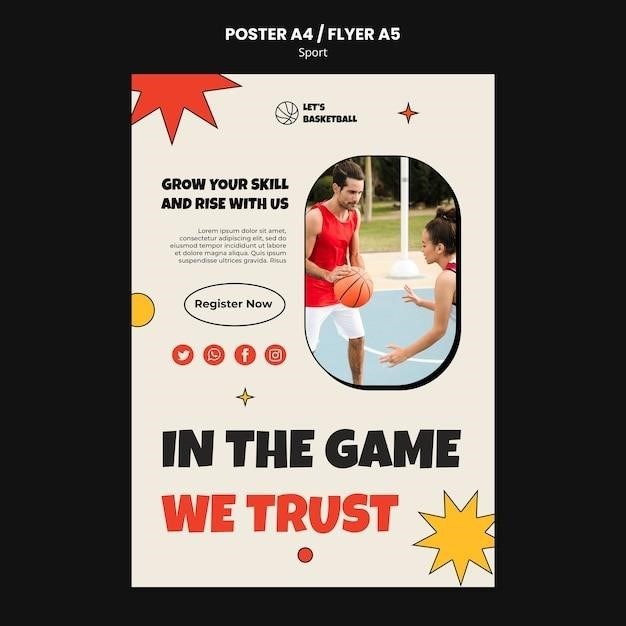The Most Dangerous Game⁚ A Comprehensive Overview
This classic short story by Richard Connell‚ also known as “The Hounds of Zaroff‚” follows hunter Rainsford’s terrifying encounter with General Zaroff on a mysterious island. Available in various formats‚ including PDF‚ it explores themes of survival and morality.
Availability of the PDF
Numerous online sources offer “The Most Dangerous Game” as a free PDF download. Many websites provide direct links to downloadable files‚ often in various formats such as .pdf‚ .epub‚ and .mobi. Some sources may require registration or a subscription‚ but many freely share the text. Public domain status allows for widespread availability. Be aware that the quality of PDFs may vary; some may be scans of older texts with lower resolution‚ while others are digitally formatted versions. You can find these PDFs through simple online searches. Always check the source’s reputation for reliable content.
Free Online Access and Download Options
Accessing “The Most Dangerous Game” as a free PDF is readily achievable through various online platforms. Many websites dedicated to classic literature offer the story for download without cost. Additionally‚ online libraries and educational resources frequently make the text available in PDF format for free access. Several sites specialize in hosting public domain works‚ ensuring legal and free distribution of the story. Remember to verify the legitimacy and safety of the website before downloading any files. Searching directly for “The Most Dangerous Game PDF free download” will yield numerous results‚ but careful selection of the source is crucial.
Different Formats⁚ PDF‚ EPUB‚ MOBI
The convenience of modern technology allows for enjoying “The Most Dangerous Game” in multiple digital formats. The ubiquitous PDF remains a popular choice‚ offering a faithful reproduction of the original text and layout‚ easily accessible across various devices. For those preferring e-readers‚ EPUB provides a format optimized for screen reading‚ adjusting text size and layout automatically. MOBI‚ specifically designed for Kindle devices‚ offers a similar optimized reading experience for Amazon’s ecosystem. The availability of these formats ensures that readers can access the story using their preferred method and device‚ enhancing accessibility and enjoyment.

Plot Summary and Analysis
Shipwrecked hunter Rainsford finds himself in a deadly game of cat and mouse with the eccentric General Zaroff‚ a hunter of humans. Survival instincts and moral dilemmas are at the heart of this thrilling tale.
The Premise⁚ Shipwreck and a Deadly Hunt
Richard Connell’s “The Most Dangerous Game” begins with Sanger Rainsford‚ a renowned big-game hunter‚ falling overboard his yacht and swimming to a mysterious island. He discovers the island is inhabited by General Zaroff‚ a sophisticated and eccentric hunter who has grown bored with traditional prey. Zaroff reveals his twisted pastime⁚ hunting humans‚ whom he considers the most challenging and exciting quarry. This sets the stage for a terrifying confrontation‚ a deadly game of hunter and hunted where Rainsford must use all his cunning and skills to survive.
Rainsford’s Struggle for Survival
Once the deadly game begins‚ Rainsford’s struggle for survival becomes a desperate fight against a cunning and experienced opponent; He utilizes his exceptional hunting knowledge and instincts‚ employing traps and camouflage to evade Zaroff’s relentless pursuit. The hunt pushes Rainsford to his physical and mental limits‚ forcing him to confront his own beliefs about hunting and the morality of taking a life. His initial arrogance and confidence gradually give way to fear and desperation as he desperately tries to outwit his terrifying adversary in a battle for his own life. The struggle becomes a test of both skill and will.
Themes of Hunting‚ Survival‚ and Morality
Connell’s “The Most Dangerous Game” masterfully explores the complex interplay of hunting‚ survival‚ and morality. Rainsford‚ initially a seasoned hunter‚ finds his own ethics challenged when he becomes the hunted. The story questions the inherent brutality of hunting‚ particularly when humans are involved. Zaroff’s twisted justification for his actions highlights the moral ambiguity surrounding the hunter-prey dynamic‚ forcing the reader to contemplate the line between sport and savagery. Rainsford’s struggle forces a confrontation with his own beliefs‚ blurring the lines between hunter and hunted and ultimately questioning the very nature of survival itself.
Author and Context
Richard Connell‚ a renowned American short story writer‚ penned “The Most Dangerous Game” in 1924. The story reflects the popular interest in hunting and adventure prevalent during that era.
Richard Connell’s Life and Works
Richard Connell (1893-1949) was a prolific American author known for his gripping short stories and screenwriting. Born in Poughkeepsie‚ New York‚ he pursued a journalism career before achieving literary success. His stories often featured suspenseful plots and explored complex themes. Beyond “The Most Dangerous Game‚” Connell’s works include diverse narratives showcasing his talent for crafting compelling characters and engaging scenarios. His contributions to both literature and film solidified his place in American literary history. His work frequently appeared in popular magazines‚ contributing to his widespread recognition. He received an Academy Award nomination for his screenplay for the 1941 film “Meet John Doe‚” demonstrating his versatility and success across different media.
Historical Context of the Story’s Publication
Published in 1924 in Collier’s magazine‚ “The Most Dangerous Game” emerged during a period of significant social and cultural shifts in the United States. The roaring twenties were marked by rapid economic growth‚ technological advancements‚ and changing social norms‚ influencing literary themes. The post-World War I era saw a rise in disillusionment and a questioning of traditional values‚ potentially reflected in the story’s exploration of morality and the consequences of unchecked power. The popularity of big-game hunting as a leisure activity among the wealthy also provided a relevant backdrop for the story’s setting and central conflict. Connell’s choice of a remote island setting perhaps reflects the societal anxieties of the time‚ hinting at isolation and the dangers lurking beneath a veneer of civilization.
The Story’s Inspiration and Influences
While the exact origins remain debated‚ “The Most Dangerous Game’s” inspiration likely drew from several sources. Richard Connell’s personal experiences with hunting‚ particularly the thrill and ethical dilemmas involved‚ probably shaped the narrative; The popularity of hunting safaris in Africa and South America during the 1920s‚ a time when exotic locales held a strong appeal‚ may have influenced the story’s setting. Furthermore‚ the prevalent literary themes of survival and man versus nature in adventure stories of the era could have played a role. The stark contrast between Rainsford’s initial perspective and Zaroff’s actions suggests an exploration of the hunter’s mindset‚ potentially influenced by contemporary debates surrounding hunting ethics and the human cost of sport.

Critical Reception and Legacy
Connell’s tale enjoys enduring popularity‚ inspiring numerous adaptations and securing its place in the literary canon. Its exploration of hunting ethics continues to resonate with readers.
The Story’s Enduring Popularity
Richard Connell’s “The Most Dangerous Game” maintains its relevance across generations due to its compelling narrative and exploration of timeless themes. The gripping suspense‚ the stark portrayal of a deadly game between hunter and hunted‚ and the unsettling moral ambiguity continue to captivate readers. Its accessibility‚ suitable for various age groups and reading levels‚ contributes to its sustained presence in classrooms and libraries. The story’s concise yet impactful style allows for quick reading and discussion‚ fueling its ongoing popularity in educational settings and among casual readers alike. Furthermore‚ the story’s adaptation into various media‚ including film and radio‚ ensures its continued visibility and exposure to new audiences‚ securing its place as a literary classic.
Adaptations and Interpretations
The enduring appeal of “The Most Dangerous Game” has led to numerous adaptations across various media. From radio dramas to film and television‚ the story’s core conflict has been reimagined in diverse settings and styles. These adaptations often emphasize different aspects of the narrative‚ sometimes highlighting the suspenseful hunt‚ other times focusing on the psychological torment of Rainsford or the disturbing nature of Zaroff’s cruelty. Some interpretations even delve into the allegorical meanings of the story‚ exploring themes of class conflict‚ colonialism‚ and the dehumanizing effects of unchecked power. These diverse adaptations demonstrate the story’s versatility and its capacity to resonate with audiences across different cultural and historical contexts. The continued reinterpretations ensure the story remains a dynamic and engaging piece of literature.
The Story’s Place in Literary Canon
Richard Connell’s “The Most Dangerous Game” holds a significant place within the literary canon‚ particularly in the realm of short stories. Its concise yet impactful narrative‚ combined with its exploration of complex themes‚ has secured its status as a frequently-anthologized and studied work. The story’s enduring popularity is evidenced by its continued inclusion in school curricula and its frequent adaptations into various media. Its exploration of hunting‚ survival‚ and morality resonates with readers‚ prompting discussions about human nature and the consequences of unchecked power. The clever plot twists and suspenseful atmosphere contribute to its lasting appeal and ensure its continued relevance in literary discussions and analyses. Its impact on the genre is undeniable‚ solidifying its position as a cornerstone of classic American short fiction.